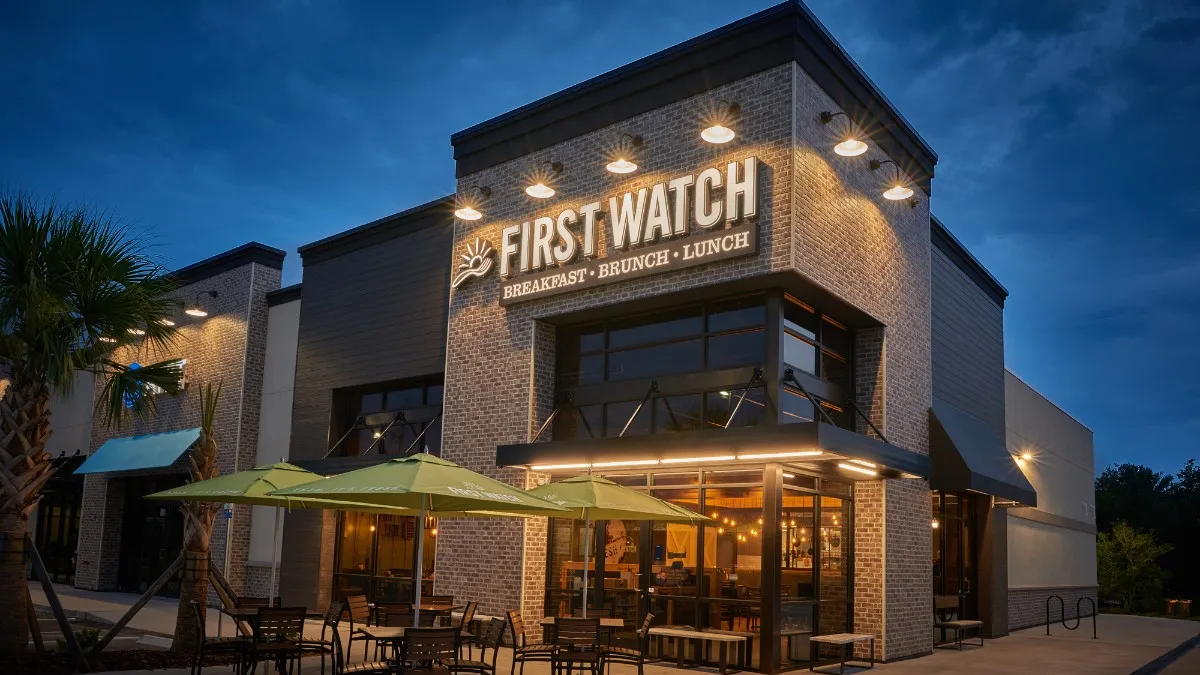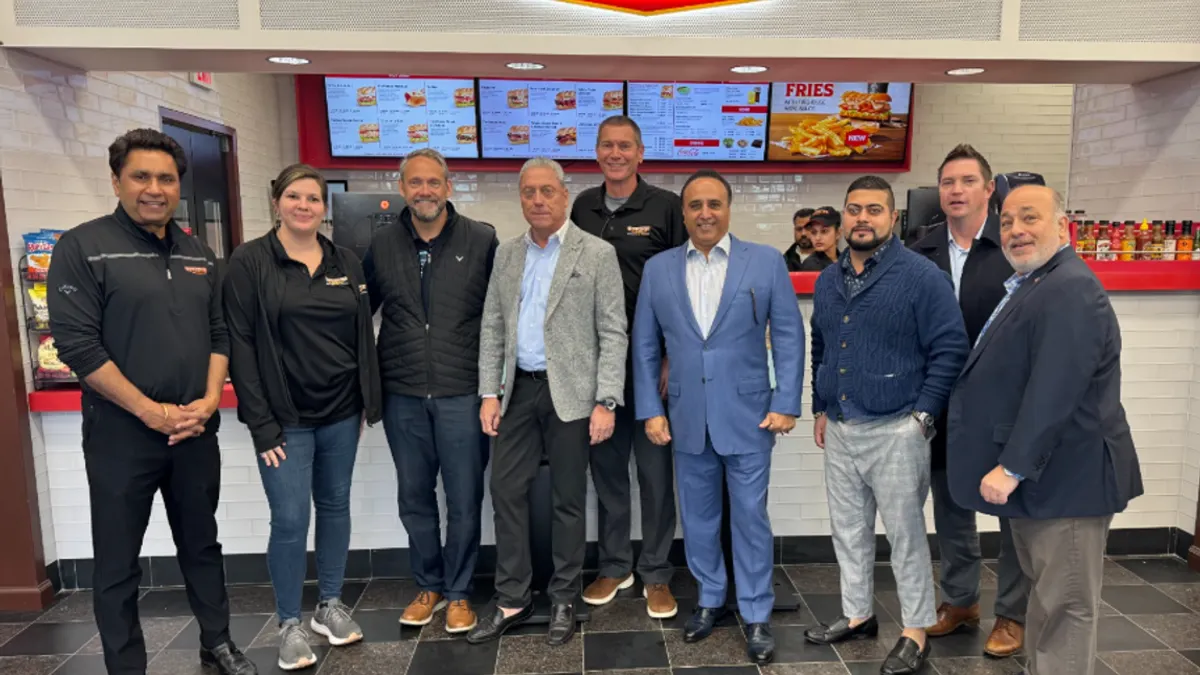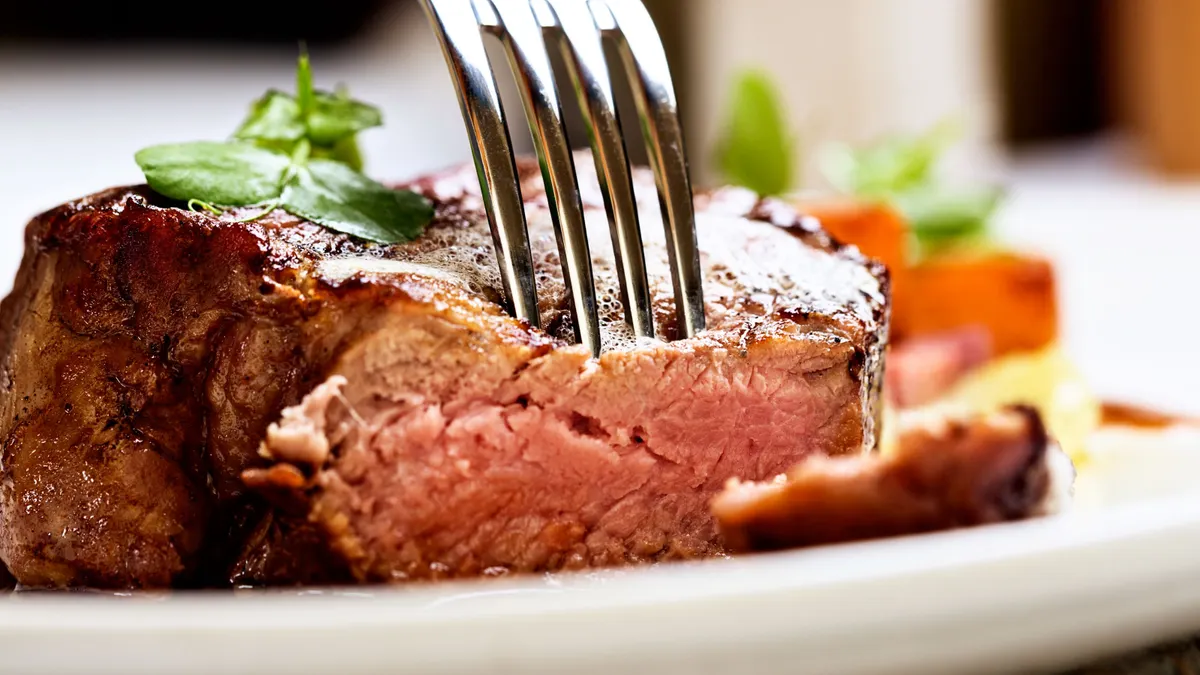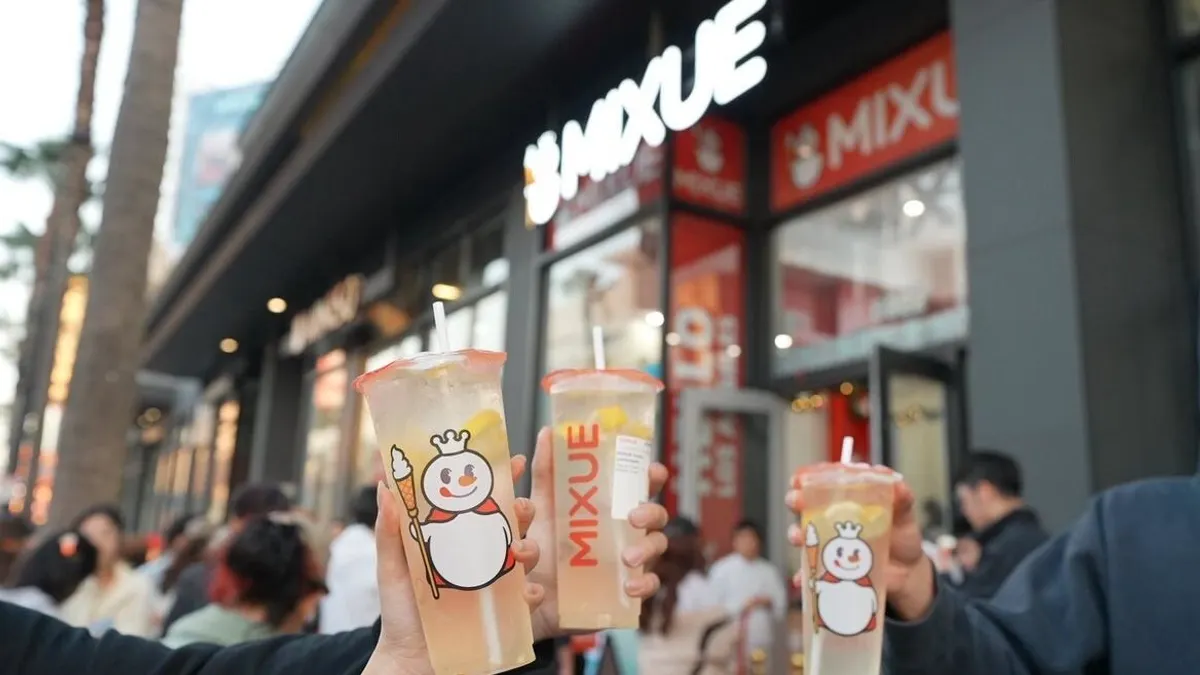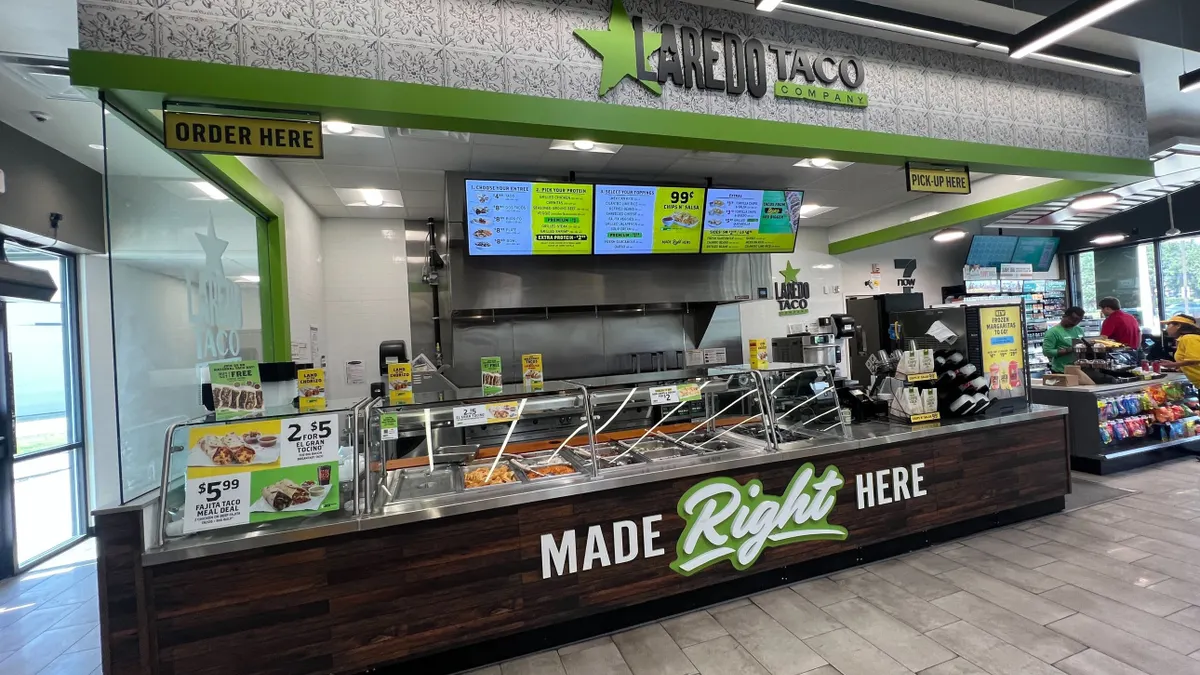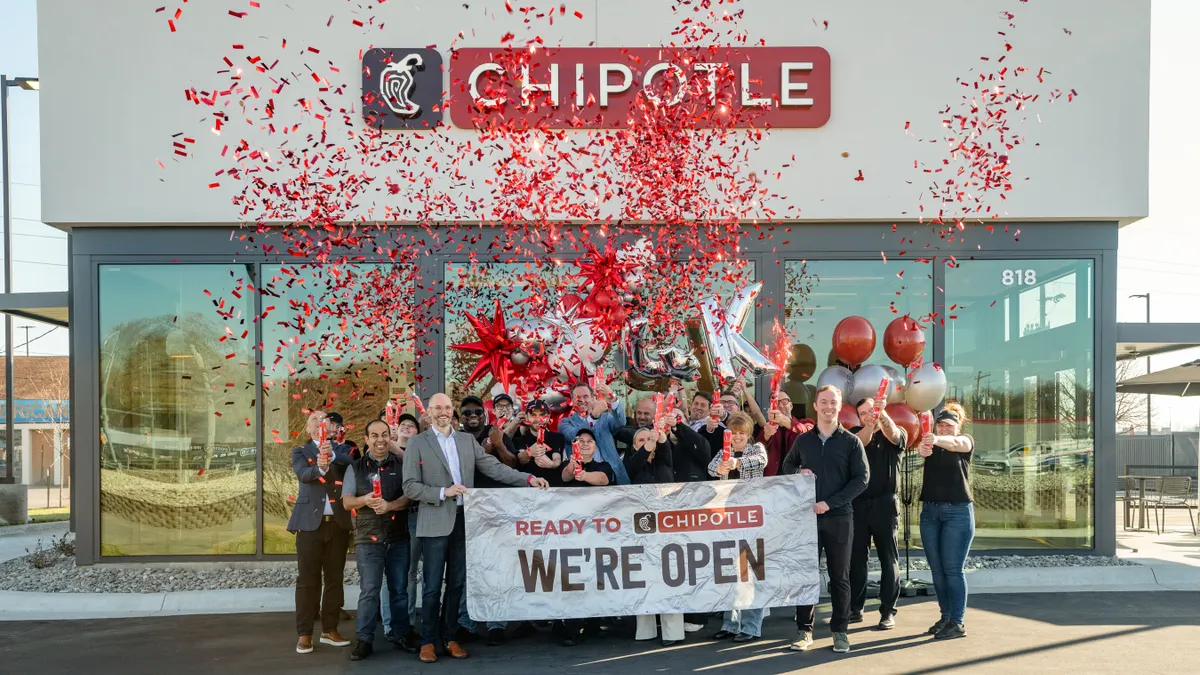First Watch was flying high heading into 2020. From a sales and growth perspective, 2019 was the chain’s best year on record, CEO Chris Tomasso said. Sales and traffic had been positive for 24 straight quarters at the full-service breakfast concept, and it was one of the fastest growing restaurants in the country. That momentum carried into January, February and even March of this year.
"We were definitely firing on all cylinders," Tomasso said.
But by March 16, states started to order dining rooms to close and on April 13, First Watch voluntarily closed its remaining company restaurants to reduce the risk of spread at its locations, Tomasso said.
"Something like this that becomes such a hard stop is even more challenging when you have the momentum that we did," Tomasso said. "It was a sucker punch we weren't ready for."
But during its restaurant closures, First Watch hatched a takeout strategy, partnering with Olo to develop a user interface, expanded its delivery partnerships with DoorDash and Uber Eats and instituted several visible safety changes to its dining rooms. These strategies are paying off. While QSRs are struggling with the breakfast daypart, First Watch has been recouping lost sales, opening new restaurants and growing off-premise fivefold in the last few months compared to pre-COVID-19.
Restaurant Dive spoke with Tomasso to find out more about how the company is thriving during the crisis and what it is doing to maintain its warm, hospitable environment during a time of social distancing and how it continues to adapt alongside its growing off-premise channel.
Editor's note: This interview has been edited for clarity and brevity.
RESTAURANT DIVE: What were the most impactful changes that you made while your restaurants were closed and preparing to reopen?
CHRIS TOMASSO: One was we obviously accelerated and embraced the off-premise opportunity. Thankfully, we were well on our way to exploring that right when COVID hit. At that point, the only way to get to-go from us was via calling our restaurants and through a small test we were doing with Uber Eats. We did basically three months worth of work in three weeks.
Part of it was instituting contactless payment, relaunching our app for online ordering and, obviously, implementing and installing personal protection equipment and safety procedures such as booth barriers and plexiglass at the host stand and even little things like the piece of equipment you put on the bottom of a restroom door so consumers can open the door with their feet, and sanitizer everywhere.
The other thing that we did was rather than reopen with a limited menu, we decided to reopen with our full menu. We wanted to make sure that we didn't lose any visits because we weren't offering something that was somebody's favorite. We just felt like when consumers were ready and willing to go back out again, that they were going to want to go to a place where they felt comfortable, they felt safe, and that also offered something that prior to this was their favorite.
Rather than marking off tables and booths and things that were not able to be used, we decided to remove those from the restaurants so that every table in the restaurant was a usable table. From a consumer perception when you see big X's or tape and chairs on top of tables, it makes you feel like you’re doing something wrong by being there. We still wanted to convey the warmth and hospitality that our industry is known for.
What have been some of the challenges to recreating a welcoming environment during the pandemic?
TOMASSO: You do have to go out of your way to make folks feel comfortable and safe. It's a delicate balance, especially when you're having to enforce things now, whether it's mandatory mask wearing or not congregating up front. I think for all of us in our industry, that's been quite the challenge.
What made it even more difficult is those things weren't standardized sometimes even by city, certainly not by state, and so trying to train based on where the restaurants were was quite a challenge. You couldn't just create standardized training materials and positions. You had to do it almost on a municipality-by-municipality basis.
Mandatory masks are a perfect example of that, and the limitations on dining room capacity. So in some [markets capacity] is 25% and some it’s 50%. We actually have some restaurants still that don’t allow in-restaurant dining at all. One of the areas we were in was requiring restaurants to take customer temperatures and track it so if there was ever a case, it would help local officials with contact tracing. That’s just a big burden to put on hourly employees. We never felt like that was really our role to do that. So we had to do special things for those particular regions.
How will you make a return on investment for new, pandemic-related technology?
TOMASSO: An ROI is nice on those things, but it's actually become table stakes. So it's not going to ROI in any kind of attractive way when you're using disposable menus, handing out disposable masks and paying for gloves. It’s a very significant expense. It's a new line item on a restaurant’s P&L that never existed before and wasn't planned for. It’s burdensome for sure. We all know how narrow restaurant margins are already.
We invested in that technology in those cases, even behind-the-scenes technology. For example, all of our employees, when they go to clock-in on the POS, we've installed a health check survey that they do prior to every shift. We had to buy thermometers for every restaurant, and imagine how expensive that is. There’s not a return on those things except they're necessary now in order to make sure the consumer feels safe with the steps that you're taking to earn that return and hopefully get that frequency back.
How will implementing technology impact your operations going forward?
TOMASSO: The biggest adaptation that we're looking at now is our off-premise sales grew from 5% to 30%.
We expect to continue to grow delivery. Breakfast delivery is nowhere near as crowded as lunch and dinner. We’ve already been told by our partners that we are among the top offerings on their sites and we just want to continue to position ourselves to stay that way as more and more people start ordering for delivery of that daypart.
Our restaurants weren't built with that assumption. Our labor model wasn't built with that assumption, nor was any technology in the restaurant that we had. So it's actually more than just technology. And we believe that that off-premise business is here to stay. So before where it was an accommodation on our part to do that, it's really developed more into a strategy. So we're looking at everything from the footprint of our restaurants and the implementation of technology to increase the throughput and intake [of] those orders and get them out faster.
First Watch has also added alcoholic beverages to its menu since COVID-19. What went into that decision and the timing of that rollout?
TOMASSO: Alcohol as part of the brunch occasion is something that's been growing for a number of years. We are constantly looking at consumer trends, and that appears to be a long-term consumer trend and not necessarily a fad.
We had already been testing alcohol in a number of our restaurants. And we basically proceeded on that path. By the end of this year, we'll have it in at least 50% of our restaurants, and it's about 20% right now. So it is something that we are following through on and we accelerated it when we closed the restaurants.
We've got some very unique offerings. We're known for our fresh produce and we've incorporated a lot of that into these drinks. We’ve taken our very popular kale tonic and made it into a vodka kale tonic. Our morning glory has lemon and turmeric and other things that we use in some of our fresh juices.
The alcohol program has been very well received. It’s absolutely incremental to what our offerings were before, and we believe it's attracting a new and younger consumer.
How has the pandemic helped inform your growth strategy going forward?
TOMASSO: With us being on such an aggressive growth plan prior to COVID, we had a number of restaurants that were in our pipeline — great sites that were already approved and in various stages of development. We stepped back right when COVID hit and looked at that pipeline. Any leases that were signed, we evaluated those and continued to pursue those. But more importantly, any restaurants that were 75% or more built, we went ahead and built those out during COVID. Basically, we finished building them and put them on the shelf, and just a couple weeks ago, we opened four restaurants in one day. And we've opened 18 since COVID first started. We've got more to build this year. And when we look at our pipeline for next year, it's tempered from where it was before. But I'd be surprised, of course, if we're not still the fastest growing full-service restaurant company next year based on what I'm hearing.
But we definitely pulled back a little bit from what our original plans were. And I think that's the prudent thing to do right now because the real estate market is changing. Lease rates are probably going to change. And you also want to make sure that the criteria that you were using to approve these sites before still make sense. One of the things that we believe has helped us during this whole process is that most of our restaurants are located in suburban areas, and with more people working remotely and from home rather than in downtown urban locations, we actually think that that's helped us tremendously.
What are some things that you are considering when looking at your site-selection criteria?
TOMASSO: There’s a lot of criteria and elements that we need to look at. For example, what is it worth to be around a university? Is it worth the same as it was before with so much remote learning? Will those universities be the foot traffic drivers that they were in the past? And then the same thing with downtown locations. There’s going to be a lot of office space vacancies and things like that, and not as much foot traffic. And then the normal retail synergies and looking at what concepts and brands and retail aren't going to be around. There are a lot of retail anchors that are closing locations and there’s a lot of foot traffic that comes with that.
How do you view the future of your brand and the industry?
TOMASSO: We're cautiously optimistic. We’re leaning in. I think we're being thoughtful. We believe that there will be a recovery and basically, we are trying to position ourselves as best we can to be one of the winners in that recovery. We’re taking measured decisions about the rate of our growth, for example, where and how we grow, some in-restaurant decisions and even spending at the corporate office, and just being more judicious about it than we have ever been, and making sure that we're not getting ahead of that recovery, but that we are positioned to accelerate as soon as the light turns green.
There were things that we were looking at as incremental opportunities before that have now become part of the business. Alcohol is a great one and so is the third-party, off-premise channel. Now they're part and parcel of our business, and we want to make sure that the decisions we make align with how the consumer will be using us and help us manage our overall expenses allocation as we move forward.


